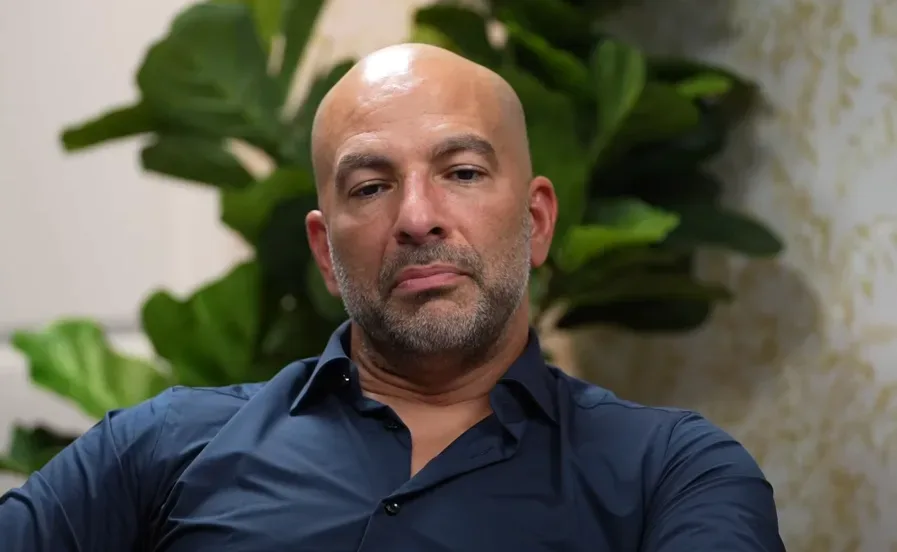Writing About Technical vs Emotional Content: Lessons from Peter Attia’s Journey
In a recent episode of the “How I Write” podcast with David Perell, Peter Attia discussed his experiences in writing his latest book.
Known for his technical, data-driven approach in his public writing, Attia’s latest work required him to balance both technical and emotional elements.
Let’s explore key takeaways from the conversation and derive writing tips for beginners, diving into Attia’s writing process, the development of frameworks, and how he mastered storytelling while maintaining scientific rigor.

From Technical to Emotional Writing
Most of Attia’s previous writing has been more technical, reflecting his background in science and medicine.
His challenge with this book was incorporating a deeper emotional component, something that didn’t come naturally in the beginning.
As Attia explained:
“It wasn’t my intuition to write that way…Bill Gifford was really good at extracting that from me and encouraging me to be more liberal in the use of storytelling.”
While he leaned heavily on technical expertise from years of writing scientific papers and blog posts, the shift to emotional storytelling was new.
Attia credited Gifford, his co-writer, for helping him add this dimension to his work.

Writing a Scientific Paper vs. a Book
Attia elaborated on the different styles of writing he’s mastered over the years, particularly contrasting his experience in scientific writing with the challenge of crafting a book.
Writing a scientific paper is a methodical, fact-driven process where emotion or storytelling rarely, if ever, plays a role. In fact, it can even detract from the clarity of scientific communication.
Attia shared his process for writing a scientific paper:
“You start with the figures…then you fill in the results, discussion, and go back to write the introduction, abstract, and methods. The data have to speak for themselves.”
In a paper, every detail has a specific purpose. There’s no room for editorializing or adding a personal touch.
This style is a stark contrast to writing a book, where narrative and emotion can help draw readers in and make the content more relatable and engaging.

Peter Attia’s Three-Part Framework: Strategy, Objectives, Tactics
Attia’s scientific background deeply influenced how he structured his book. In the podcast, Perell pointed out the book’s clear organization, which resonated with Attia’s logical and analytical style.
Each chapter follows a framework built around strategy, objectives, and tactics. This structure wasn’t just an arbitrary choice—it’s a deliberate approach inspired by one of Attia’s favorite quotes from Sun Tzu’s The Art of War:
“Strategy without tactics is the slowest route to victory. Tactics without strategy is the noise before defeat.”
The framework plays a critical role in the clarity and coherence of the book. By using this approach, Attia helps readers digest complex information by breaking it down into manageable steps.
It’s a model that mirrors the way he thinks about problem-solving in his medical practice.

The Importance of Frameworks
Frameworks, according to Attia, are essential to organizing thoughts, particularly when dealing with a vast amount of information.
As he explained:
“The most novel contribution of the book is the idea that you can put almost everything into a framework.”
This overarching framework of moving from objectives to strategy to tactics is consistently applied throughout the book. Within each chapter, there are smaller frameworks that Attia uses to explain complex subjects like nutrition and exercise.
For example, in his discussions on exercise, he uses frameworks like stability, strength, and aerobic base to break down the components of physical fitness.
By structuring ideas into clear frameworks, Attia ensures that the book is both exhaustive and easy to follow.
This approach also helps to minimize overlapping concepts and reduces confusion, providing readers with a clear path through the material.

Developing Frameworks from Real-Life Conversations
Interestingly, these frameworks weren’t necessarily created in a formal, deliberate process.
Many of them were born out of years of real-life conversations with patients. Before COVID-19 forced his practice to go virtual, Attia often found himself drawing on whiteboards in his office, explaining concepts to patients.
This hands-on, visual approach allowed him to simplify complex ideas, a skill that translated into his writing.
As Attia noted, much of the book’s content was shaped by these experiences:
“Most of these ideas came from talking to patients and explaining things on a whiteboard.”
This iterative process of communicating complex medical ideas to patients, while keeping them clear and digestible, is reflected in the way the book is structured.
The act of continually refining his explanations helped Attia crystallize these concepts into the frameworks presented in his book.

The Challenge of Voice: Striking a Balance Between Simplicity and Complexity
One of the key challenges in writing a book on complex subjects like medicine and science is deciding on the appropriate level of complexity for the audience.
Attia aimed to strike a balance—making the book accessible while still maintaining its intellectual rigor.
He noted that he didn’t want to “dumb down” the content to the point of being inaccurate or lazy, but he also didn’t want it to be so technical that readers would be lost.
As Attia shared:
“I wanted to write a book that was probably above USA Today, but more with The Wall Street Journal or The Atlantic… one that anybody could read.”
Attia and Gifford spent a lot of time refining the language to find the right tone.
A great example of this tension came when they were writing about the liver in a chapter on metabolic disease.
Attia wanted to use the word “extracorporeal” to describe support mechanisms for organs like the heart and lungs, but Gifford pushed back, arguing that it would alienate readers.
After a month of back-and-forth, Attia eventually conceded, recognizing that while “extracorporeal” is common jargon in the medical community, it might confuse the average reader.
“It was always a tug. You need people who are not in your space to help keep the language accessible.”
The compromise involved finding simpler ways to explain complex medical concepts without losing the core message.
This balancing act is evident throughout the book, where Attia manages to educate without overwhelming the reader.

Developing a Personal Writing Process
Attia also touched on how he thinks about his own writing process and how it has evolved.
While the technical aspects of writing came naturally, adding an emotional narrative and crafting a voice that felt true to both him and the audience took practice.
His personal style leans more toward clarity and precision, values that stem from his scientific training. Still, he acknowledged that storytelling is an important tool for making a book engaging.
“I just wanted to write a book that was accessible, where if you’re in high school, you can read this book, and maybe some of the words are bigger, but that’s more a function of writing about science.”
Writing for a broad audience requires making constant trade-offs between simplicity and accuracy, and Attia’s ability to navigate this challenge shows in the finished product.

Key Takeaways from Peter Attia’s Writing Process
- Balancing technical with emotional writing: Attia’s transition from technical to emotional writing was guided by his co-writer, Bill Gifford. The addition of storytelling helped engage readers while retaining the technical rigor of his content.
- Frameworks are crucial: Attia organizes his thoughts using a series of frameworks, allowing readers to easily follow the complex subjects covered in the book.
- Real-life conversations influence writing: Many of Attia’s ideas were developed during patient conversations, where he used whiteboards and visual aids to explain complex topics.
- Voice and complexity: Striking the right balance between making the book accessible without “dumbing it down” was a key challenge. Attia aimed for a voice above USA Today but accessible to a wide audience, including high school students.
- Collaboration is key: Having someone outside of your area of expertise, like Gifford, helps ensure that the language remains accessible, making the book easier for lay readers to engage with while retaining its educational value.
Attia’s writing journey offers valuable insights for anyone tackling complex subjects in their own work.
Whether you’re writing for a scientific journal or a broad public audience, finding the right balance between technical accuracy and engaging narrative can make all the difference.
(Source: the “How I Write’ Podcast with David Perell featuring Peter Attia)




